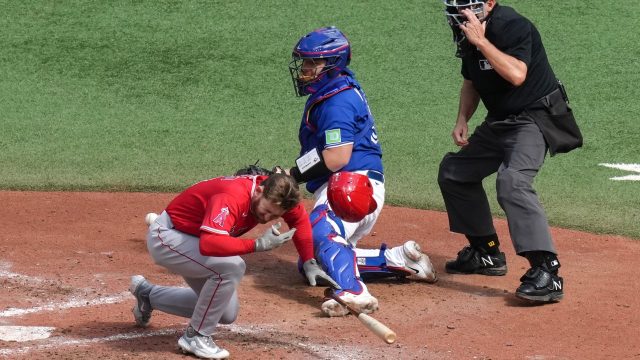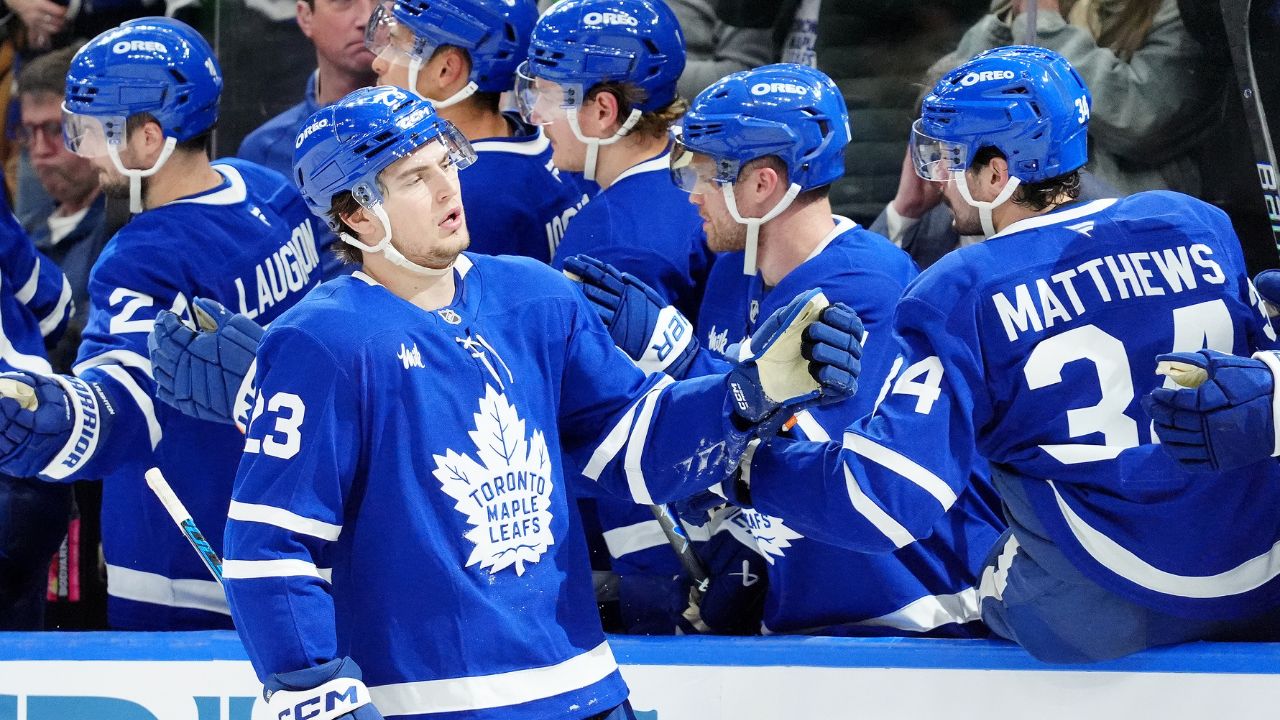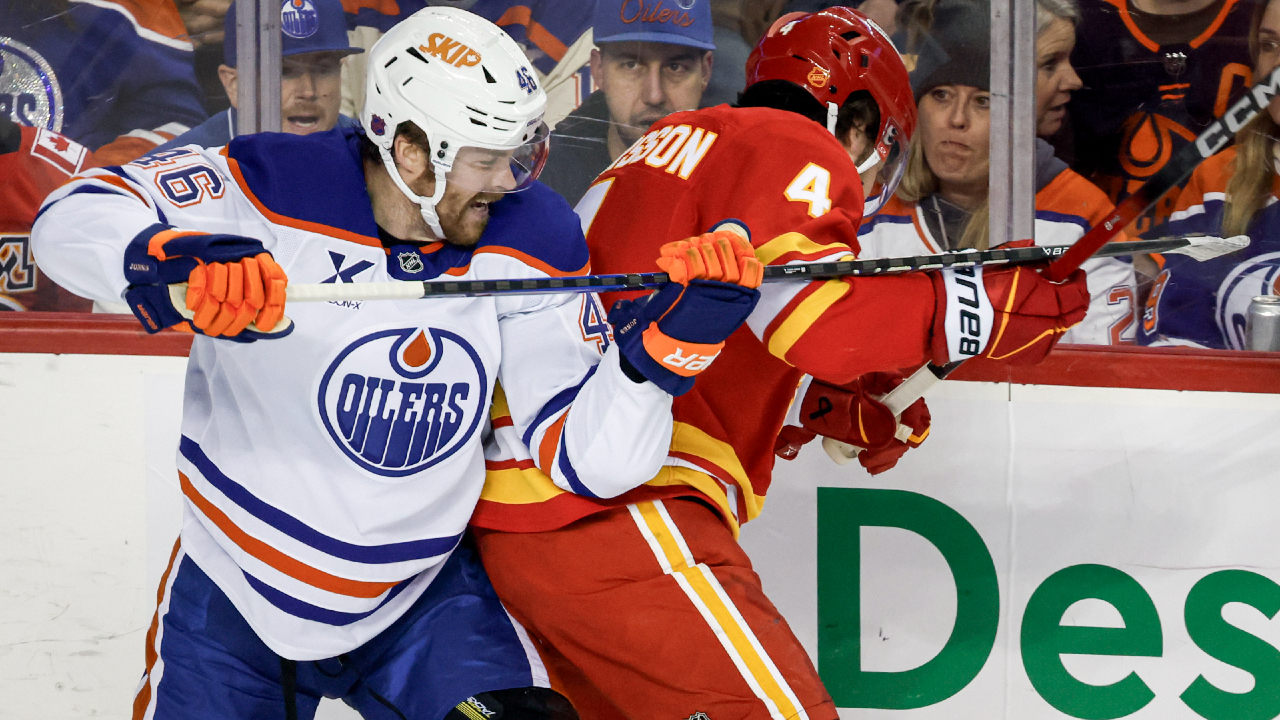
OAKLAND, Calif. – These high-stress Septembers are becoming a matter of course for the Toronto Blue Jays and Vladimir Guerrero Jr., who since his rookie year of 2019 has finished out every season playing games of consequence.
The thing he’s learned about performing when the stakes are high?
“Pressure. Pressure. I learned that you have to control what you can control, so not to put pressure on myself,” the All-Star first baseman said through interpreter Hector Lebron. “Trying to control myself to not get too anxious.”
Easier said than done, obviously, and Guerrero acknowledges that “in the past, when you know you’re going to have a big at-bat for your team, sometimes you can’t control that side. And what happens is you expand the zone and therefore you’re going to be chasing. But in that particular moment, you know you’ve got the big at-bat for your team. It happens, and you learn from that.”
The 24-year-old has certainly done a lot of learning during an incongruous 2023 in which the predictive data measuring the quality of contact he’s making suggests the measurable results should be better than they are.
Take his final two at-bats in Wednesday’s 5-2 loss at Oakland, when he ripped two balls to left field and settled for 735 feet of outs during an 0-for-4 day that ended a 21-game on-base streak. Blue Jays manager John Schneider thought his slugger had clipped both pitches but he ended up with neither.
A similar phenomenon led Guerrero to watch a 110-m.p.h. drive during Sunday’s 7-5 win at Colorado, only to see it go off the wall. That limited him to a single instead of a double, but he got lucky when the relay in from the outfield bounced away, allowing him to reach second anyway.
Guerrero said he watched the ball because he was certain he’d hit that ball even farther than a homer earlier in the game, a mistake that led to a chat with Schneider in the dugout.
“I don’t remember exactly what he said,” Guerrero relayed, “but I just said to him, ‘It was my bad.’ I knew I could’ve made it to second base. And then he said to me, ‘You’re good. Baseball is on your side. You made it to second base anyway.’”
Regardless, Guerrero said in recent weeks he’s been keying in on hunting pitches in a specific location and then being more aggressive “on the pitch that I’m looking for.”
“Before that, maybe a little bit of chase,” he added. “Now, I’m just trying to focus on the pitch that I really want to hit, that I’m looking for, and just trying to be aggressive with that.”
As for his reasons for the adjustment, he said “it’s part of the process. I always say that not every year is going to be the same. Every year, they’re going to pitch you differently. And you have to adapt to that and you’ve got to make adjustments. And lately I’ve been feeling good. And I think I’m adapting to that. So, hopefully, I finish strong.”
RISING RYU: When Hyun Jin Ryu’s elbow blew out last summer, the odds that he’d pitch again for the Blue Jays, let alone pitch effectively, appeared slim. He was 35 and facing a second Tommy John surgery, which added to the challenge and left the Blue Jays unsure of how to factor the veteran lefty into their 2023 plans.
“We were hoping to just get him back at some point during the year. We’ve gotten him back and gotten the version of him that he has been and a little bit extra,” Blue Jays manager John Schneider said. “The fact that he’s pitching really well has been an added bonus.”
Given the way the year has played out for Alek Manoah, Ryu’s return has also turned out to be a critical development for the Blue Jays, something Schneider described as “a very underappreciated part of our season.”
Since returning Aug. 1, the veteran lefty has made seven starts, logging 34 innings with a 2.65 ERA and 1.059 WHIP, including a five-inning, two-run performance in Wednesday’s 5-2 loss at Oakland that was his first outing on regular rest.
Afterward, Ryu said through interpreter J.S. Park that he thought his stuff “was the same” and that he “came back and just felt the same as before.”
Allowing that to happen is a rehab process that hit right in every way possible, something teammates Jordan Romano and Tim Mayza, both of whom have undergone Tommy John surgery as well, really noticed. That’s allowed Ryu to hit the ground running, a piece both described as among the toughest challenges in coming back.
“The rehab is very monotonous, you throw bullpens and everything’s at your own pace – for a while, it’s just you and a catcher and you’re just worried about hitting spots,” said Mayza. “Then you add the other element of a hitter and trying to get outs, and that was the biggest thing, trusting your preparation and trusting that, hey, I’ve done everything I can to prepare for this moment and now it’s just time to go out there and compete.”
Added Romano: “The biggest thing for me was just getting up to game-speed, like Tim was saying. When you haven’t felt that speed for a year-plus, it’s kind of a shock to the system. Once you get over that, I felt like I was fine. Then there’s arm management. The first year for me, my arm was up and down, but then the year after that, it was great.”
Ryu said after his start Wednesday that his arm “seems like it’s recovering faster or in a better state than before,” although he was also hesitant to describe it as a major difference.
Still, Mayza felt that his own regimen and recovery post-surgery was better “because you go through all these different arm exercises that you fall into a very strict routine,” making it “probably easier day-to-day to know what my arm needs pre and post to prepare to pitch.”
No matter how he’s gotten there, Ryu seems to have found a sweet spot, to the Blue Jays’ great fortune.
DAVIS DELIVERS: To put Davis Schneider’s impact into context, consider that in his 20 games since being recalled Aug. 4, the 24-year-old has amassed a ridiculous 1.9 WAR, as calculated by FanGraphs, good for seventh among Blue Jays position players.
Seven homers, seven doubles and 15 walks in 82 plate appearances are the reason for that, and while his numbers are sure to normalize over time, what’s been most eye-catching is the process producing the outstanding results.
“I love his approach, really. He doesn’t budge,” said manager John Schneider. “He’s really focusing on a pitch in the middle of the zone until he gets to two strikes, and he’s not missing it when he gets it, for the most part. His approach is consistent. The walks, the damage, it’s what he’s been doing. He’s definitely brought a shot of energy into our team since he’s been here. And it’s easy to put him in there when you know what you’re getting every day.”
To that end, Davis Schneider hasn’t been resting on his laurels, utilizing the extra time Bo Bichette and Matt Chapman have as they recuperate from injury to pick their brains in the dugout, while trying to not be “too annoying.”
“Bo always says how my approach plays, so having him say that kind of makes myself more confident when I’m up there, because he’s such a good hitter,” said Davis Schneider. “Even when I’m going rough, he’s always just like, ‘Stick to your approach, even if you get out, stick with your approach because it’s going to play. If you get out, you get out. So what? On to the next one.’”
In combination with his production, it’s all reinforced that what he was doing during a breakout season at triple-A Buffalo will play in the big leagues.
“Pitchers are going to make mistakes no matter what level you’re at,” said Davis Schneider. “Knowing that going into an at-bat, knowing they’re going to make a mistake, either middle or a pitch away a little bit, having that confidence in me when I go up to the plate is pretty big.”






